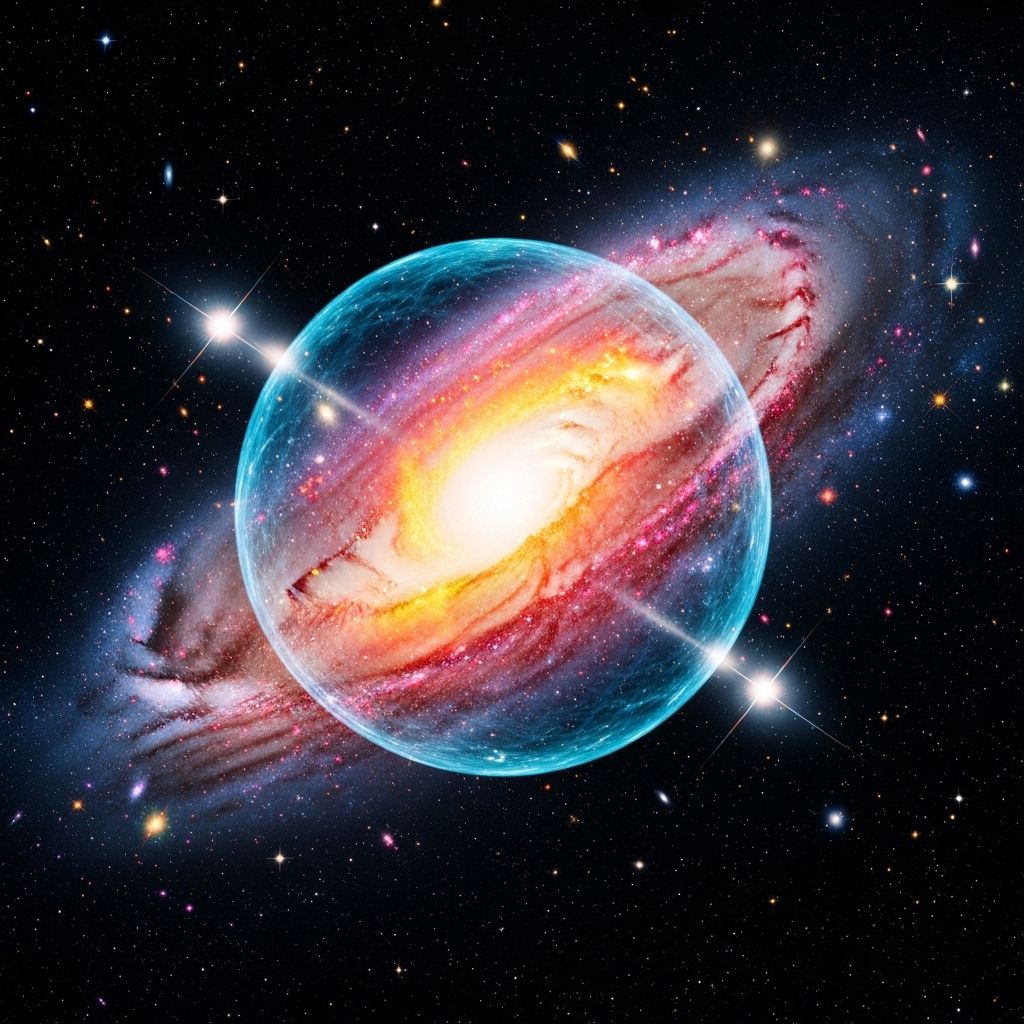Big Bang Theory: 4 Key Pieces Of Evidence For Modern Cosmology
Discover how the Big Bang theory revolutionized our understanding of the universe, its compelling evidence, and the unsolved mysteries that continue to inspire scientific exploration.

Image: HearthJunction Design Team
The Big Bang Theory: Foundations of Modern Cosmology
The Big Bang theory is the leading scientific explanation for the origin and evolution of the universe. It describes how the cosmos expanded from a state of high temperature and density approximately 13.8 billion years ago, giving rise to all of space, time, matter, and energy. This groundbreaking model is supported by multiple lines of evidence, yet it also leaves some profound mysteries unsolved, spurring ongoing research and debate among scientists.
What Is the Big Bang Theory?
The Big Bang theory posits that the universe began as an extremely hot, dense point—often imagined as a singularity—before rapidly expanding and cooling. Contrary to the name, it was not an explosion in space; rather, it was the rapid expansion of space itself, carrying matter and energy outward. In those first infinitesimal moments, the universe was a trillion-Kelvin ball of energy and particles, compressed into a minuscule volume, similar in scale to a peach or a small grapefruit.
- The universe did not expand into pre-existing space; space itself began to exist at the instant of the Big Bang.
- As the universe cooled, energy condensed into elementary particles, which formed the first atomic nuclei, then atoms, and eventually stars and galaxies.
The Name ‘Big Bang’
Despite its dramatic name, the Big Bang was not an explosion in the conventional sense. Instead, it marked the concurrent emergence of space and expansion everywhere at once. The label is somewhat misleading, yet it has endured due to its evocative imagery.
Key Evidence Supporting the Big Bang
The Big Bang theory stands on a solid foundation of observational evidence. Over the past century, astronomical discoveries have reinforced its predictions and transformed our understanding of the universe’s past.
1. The Expanding Universe
In the 1920s, astronomers Edwin Hubble and Georges Lemaître found that distant galaxies are moving away from us, and that the farther away a galaxy is, the faster it recedes. This observation, known as Hubble’s law, implies that space itself is stretching, not that galaxies are flying through a static void.
- Every point in the universe observes other galaxies receding, leading to the concept of universal expansion.
- There is no central point from which the universe is expanding – the expansion happens everywhere simultaneously.
2. Cosmic Microwave Background Radiation (CMB)
In 1965, Arno Penzias and Robert Wilson accidentally discovered a faint background glow permeating space—the cosmic microwave background. The CMB is the cooled remnant of the hot, dense early universe, now detectable as a low-energy microwave signal from all directions.
- The CMB provides a “baby picture” of the universe about 380,000 years after the Big Bang, when atoms first formed and light could travel freely.
- Its uniformity and slight variations match theoretical predictions, offering strong evidence for the Big Bang.
3. Abundance of Light Elements
The Big Bang model predicts the proportions of light elements—hydrogen, helium, and lithium—formed minutes after the event during a period known as Big Bang nucleosynthesis. Observations of the oldest stars and distant galaxies confirm these predicted ratios, supporting the theory’s accuracy.
4. Large-Scale Structure of the Universe
Modern surveys of galaxies reveal a vast “cosmic web” of matter, featuring clusters, filaments, and voids. Computer simulations of structure formation, starting from the initial fluctuations seen in the CMB, closely reproduce the observed universe. This congruence indicates that gravitational growth from the early universe’s conditions described by the Big Bang theory can explain the cosmos we see today.
A Brief Timeline of the Universe
| Time Since Big Bang | Milestone Event |
|---|---|
| <10−36 seconds | Planck epoch: Physics as we know it breaks down |
| ~10−36–10−32 seconds | Cosmic inflation: Universe expands exponentially |
| ~10−6 seconds | Quarks combine to form protons and neutrons |
| ~3 minutes | Protons and neutrons form nuclei (hydrogen, helium, lithium) |
| ~380,000 years | Atoms form; universe becomes transparent; CMB released |
| ~400 million years | First stars and galaxies form; cosmic “dark age” ends |
| ~9 billion years | Solar System forms |
| 13.8 billion years | Present day |
The Big Bang: Not an Explosion in Space
One major misconception is that the Big Bang was an explosion from a single point into empty space. In reality, there was no “outside” or pre-existing space. All of space and time originated in the Big Bang, making questions about what came before or what the universe expands into fundamentally unanswerable with current physics.
“The universe has not expanded from any one spot since the Big Bang — rather, space itself has been stretching, and carrying matter with it.”
What Happened Before the Big Bang?
The Big Bang theory describes the evolution of the universe from its earliest moments, but it does not explain the initial cause or what, if anything, came before. Was the Big Bang truly the beginning of everything? Or could it have been the start of just our observable universe?
- Some speculative models, like the cyclic universe or string theory, suggest the universe could be part of a repeated cycle of Big Bangs and Big Crunches.
- Other ideas, such as quantum gravity or multiverse scenarios, are still under investigation but remain untested.
So far, no model explains the birth of the universe in a way that’s both theoretically sound and observationally verified.
The Fate of the Universe: Open Questions
While the Big Bang model offers a robust account of the universe’s past, its ultimate destiny remains unclear. The ongoing expansion could slow, halt, or accelerate, depending on factors like the total amount of matter and energy—including enigmatic dark energy and dark matter.
- If expansion continues indefinitely, the universe may fade into darkness in a scenario called “heat death.”
- If gravity eventually overcomes expansion, a “Big Crunch” could result, collapsing the universe back to a dense state.
- Other possibilities include a “Big Rip” (unbounded acceleration rips matter apart) or cyclic models.
So far, data suggest the universe’s expansion is accelerating due to dark energy, making an endless, cold future the likeliest outcome. But this is still an active area of research.
Unsolved Mysteries and Frontiers
- Nature of the “Singularity”: Physics breaks down at the very first instant of the Big Bang, so our current theories cannot describe earlier states.
- What Triggered the Big Bang? The cause of the universe’s birth remains unknown and may ultimately require a quantum theory of gravity or new physics.
- Dark Matter and Dark Energy: These invisible substances make up most of the cosmos, yet their true nature is a mystery.
- Inflation: The epoch of rapid expansion that smoothed out the universe’s structure is a well-supported idea, but its underlying physics are still debated.
- Multiverse Hypotheses: Some theories propose our universe is just one of many, with varying laws and constants. No direct evidence exists for this idea yet.
The Big Bang: Theory Under Scrutiny
Despite popular misconceptions and occasional claims that new data “breaks” the Big Bang theory, the model remains robust and compatible with all verified observations. Even the latest discoveries from cutting-edge observatories, like the James Webb Space Telescope, continue to support the core tenets of modern cosmology.
However, science is an evolving process. As technology advances and new evidence emerges, our understanding of the universe and the Big Bang itself may be refined, revised, or replaced by more comprehensive models in the future.
Frequently Asked Questions (FAQs)
Q: Was there anything before the Big Bang?
A: The Big Bang theory does not explain what happened before the universe began, and current physics cannot describe conditions before time and space existed. Some speculative models suggest cyclic or multiverse scenarios, but these remain unverified.
Q: Is the universe expanding into something?
A: No. The universe is not expanding into pre-existing space. Rather, space itself is expanding everywhere at once.
Q: What is the cosmic microwave background?
A: The cosmic microwave background (CMB) is faint microwave radiation from the early universe, released when atoms formed about 380,000 years after the Big Bang. It provides a snapshot of the universe at that time and is key evidence for the Big Bang.
Q: Is the Big Bang theory proven?
A: While no scientific theory is “proven” beyond all doubt, the Big Bang model is overwhelmingly supported by evidence and is accepted by the vast majority of cosmologists.
Q: What will happen to the universe in the future?
A: Observations suggest the universe’s expansion is accelerating, likely leading to a cold, dark “heat death.” However, other outcomes are possible depending on the properties of dark energy and other factors.
Conclusion: The Big Bang’s Enduring Legacy
The Big Bang theory revolutionized our understanding of the universe, providing compelling explanations for observations ranging from galaxy motions to the cosmic microwave background. Yet, as in all great scientific stories, questions remain—about the true nature of the beginning, the fate of the cosmos, and what may lie beyond our current knowledge. As new discoveries unfold, our cosmic story continues to evolve, shaped by curiosity, technology, and the enduring drive to understand our universe.
References
- https://www.space.com/13320-big-bang-universe-10-steps-explainer.html
- https://www.space.com/31192-what-triggered-the-big-bang.html
- https://www.space.com/james-webb-space-telescope-didnt-break-big-bang-explained
- https://www.space.com/52-the-expanding-universe-from-the-big-bang-to-today.html
- https://www.space.com/8066-big-bang-solid-theory-mysteries-remain.html
Read full bio of Anjali Sayee











